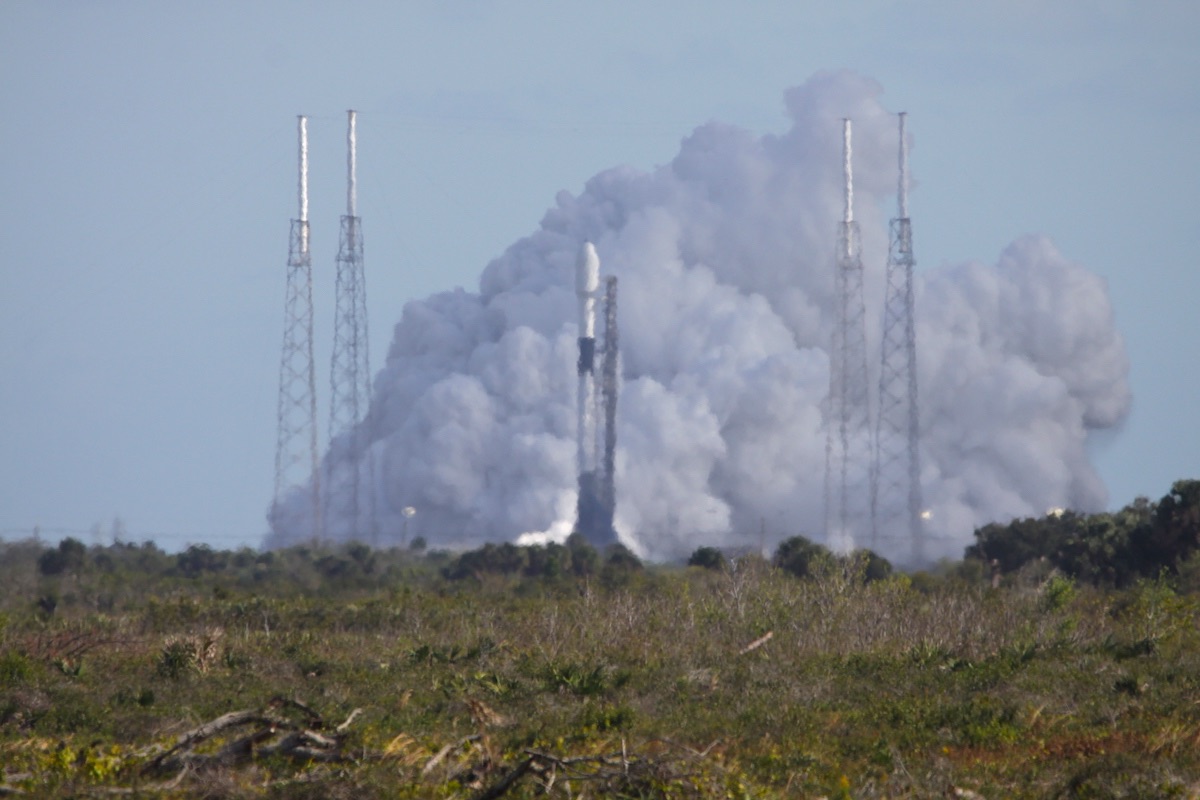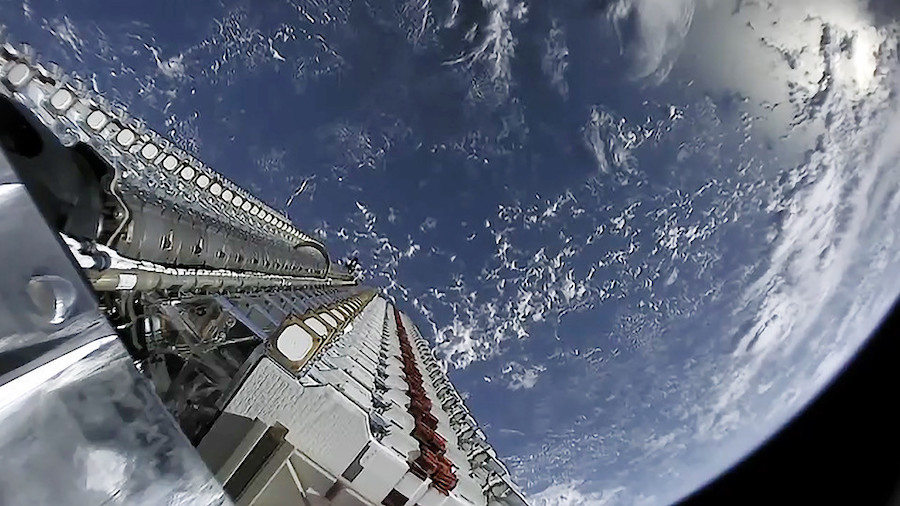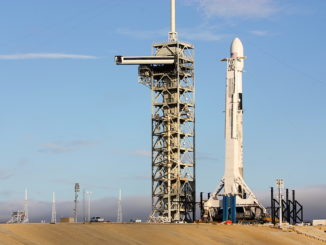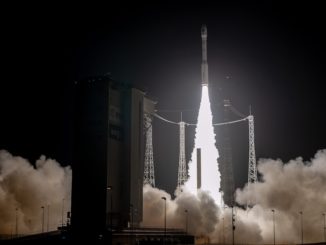
Just one day after a mission from a nearby launch pad, SpaceX test-fired a Falcon 9 rocket Monday at Cape Canaveral Air Force Station ahead of the company’s next flight. Faced with extreme weather this week in the ocean recovery zone for the Falcon 9’s first stage booster and payload shroud, SpaceX said it was evaluating the best opportunity to launch the Falcon 9 with 60 Starlink broadband satellites.
SpaceX is not expected to attempt to launch the mission Tuesday as previously scheduled.
SpaceX’s launch team presided over an automated countdown sequence Monday afternoon. After SpaceX filled the rocket with densified, super-chilled kerosene and liquid oxygen, the countdown culminated in ignition of the Falcon 9 rocket’s nine Merlin 1D main engines at 2 p.m. EST (1900 GMT).
The engines fired several seconds and built up to 1.7 million pounds of thrust while hold-down clamps ensured the Falcon 9 remained on the ground. The engines shut down as a towering cloud of exhaust and steam rose above Cape Canaveral’s Complex 40 launch pad.
In a tweet later Monday, SpaceX confirmed the completion of the static fire test, a standard milestone in all of the company’s launch campaigns. For Monday’s test-firing, the Starlink satellite payloads and the Falcon 9’s nose shroud were mated to the top of the Falcon 9 rocket.
SpaceX has not test-fired rockets with customer payloads since an Israeli communications satellite was destroyed when a Falcon 9 exploded during a countdown for a static fire test in September 2016. But the Starlink satellites are built and owned by SpaceX, leaving that decision on Starlink missions entirely up to company managers.
The Falcon 9 was scheduled to lift off as soon as Tuesday at 11:59 a.m. EST (1659 GMT), but SpaceX said the company’s launch team is evaluating the best launch opportunity “due to extreme weather in the recovery area.”
SpaceX has dispatched ships to positions in the Atlantic Ocean northeast of Cape Canaveral for a propulsive vertical landing of the Falcon 9’s first stage booster and recovery of the rocket’s payload fairing. Fast-moving vessels fitted with giant nets will try to catch the fairing, which splits off the rocket in two halves a few minutes after launch and descends back to Earth under parachutes.
The first stages of Falcon 9 rockets are regularly reused multiple times, and SpaceX has begun retrieving fairings, and reused the nose shroud for the first time last year in a bid to reduce launch costs.
The 60 Starlink satellites slated to launch on the next Falcon 9 rocket will join 180 others delivered to orbit on three previous missions in May, November and Jan. 6.

SpaceX is deploying the Starlink fleet, which may eventually number thousands of satellites, to beam broadband Internet signals to worldwide consumers. The company, founded and led by billionaire Elon Musk, expects to find customers in remote regions without reliable Internet service, plus airliners, ships and military forces.
Each of the Starlink satellites weighs about a quarter-ton and use krypton ion thrusters for maneuvers in orbit. The spacecraft are built at a SpaceX factory in Redmond, Washington.
SpaceX says it hopes to begin regional broadband service to Canada and the northern United States with the partially-complete Starlink constellation around the middle of this year, once it has launched 12 Starlink missions. The company says Starlink service for Internet consumers worldwide will come after 24 launches.
SpaceX plans to build out an initial block of 1,584 Starlink satellites in orbit 341 miles (550 kilometers) above Earth. But the company could launch many more if there’s sufficient market demand, and SpaceX has regulatory authority from the Federal Communications Commission to operate as many as 12,000 broadband satellite at different altitudes in low Earth orbit.
Starlink missions are expected to make up the majority of SpaceX’s launches this year. The company says it could launch more than 20 Starlink missions in 2020, plus Falcon 9 and Falcon Heavy flights for NASA, the U.S. military and commercial customers.
The upcoming Starlink mission will mark SpaceX’s third launch of the year, following a previous Starlink launch on a Falcon 9 rocket Jan. 6, and another Falcon 9 flight Sunday from the Kennedy Space Center to test the launch escape system on SpaceX’s human-rated Crew Dragon capsule.
Email the author.
Follow Stephen Clark on Twitter: @StephenClark1.



